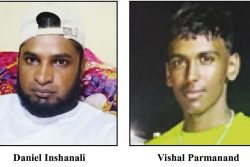By Kartik Kannan
(ESPN Cricinfo) How important is history in determining the future? I’ve seen quotes saying the future is not always determined by the past, but when we look to predict a winner from multiple choices, our brain is hardwired to look at history. So how much of history is relevant in such a discussion? Two years, four years, eight years, or previous editions of the World Cup?
Looking ahead to how the top eight sides might perform at the World Cup, I shall take into account their performances over the last two years, in conditions broadly similar to those they might experience at the tournament – i.e. in Australia, New Zealand, England and South Africa.
The world has changed quite a bit since 1992, when the tournament was last played in Australia and New Zealand. But one thing has stood the test of time – the World Cup is usually won by sides that are exceptional in one or more of the three skills of batting, bowling and fielding, and by sides that keep mental reserves handy for managing pressure.
The 2015 World Cup is likely to be played on pitches that aid batting, and perhaps slower than the pitches seen during the Australian ODI summer so far. With two new balls and less scope for the ball to reverse-swing, the onus will be on strong opening partnerships and preserving wickets to push scoring at the end of the innings.
Unless the opposition strives hard to attack and take wickets, most of the top batting sides will find a way to make 270-plus scores, as England found out in the final of the tri-series when they let Australia waltz their way to 278 after being on the mat at 60 for 4. One-dimensional sides that are good at one of the skills might find it tough to survive in conditions for this year’s World Cup.
Given all this, I have crunched some numbers to determine what we can expect, realistically, from the top eight teams. The sides are ranked on a string of parameters and grouped into slots. All matches played in Australia, New Zealand, England and South Africa between January 1, 2013 and January 31, 2015 have been taken into account, and points awarded for meeting various criteria.
These include teams’ batting and bowling averages, batting and bowling run-rates, and their win percentages over the two-year period. Teams that score on all of these criteria are likely to be well-rounded sides that aren’t too reliant on either their batting or their bowling.
Here are my findings:
Record of top eight teams playing in Australia, New Zealand, England and South Africa over the last 25 months © ESPNcricinfo Ltd
Ranking of top eight sides based on recent results © ESPNcricinfo Ltd
Favourites – Australia, New Zealand, South Africa
These three teams tick all the boxes, with a high win percentage in the last two years and strong numbers with both bat and ball.
 Level 1 – India, England, Sri Lanka
Level 1 – India, England, Sri Lanka
Despite their weak bowling, India overall pack the most punch among sides ranked 4-8 in my simulation, with their batting coming to their rescue. England and Sri Lanka have shown signs of blooming a month before the World Cup, but haven’t enjoyed great results over the last two years in the kind of conditions expected at the World Cup. All three are one-dimensional sides, and are dependent on good days when their skillsets somehow come together. I’d pick one of these sides for the semi-finals, and maybe all of them for the quarter-finals.
Level 2 – Pakistan, West Indies
These two sides have had poor runs of late, and have struggled to make an impact with both bat and ball. While Pakistan were in a more or less similar situation in 1992, their bowling had far more experience and penetration, and they had a decent batting line-up and a leader who made his men believe they were cornered tigers. This time around, they could still spring a surprise or two but recent history suggests they just about have enough in them to make the quarters. West Indies seem like an aged cobra without fangs, and hardly look like challenging anyone in this format.
Kartik Kannan blogs at The French Cut to Long Stop, and is an independent photographer. Kartik used to work at ESPNcricinfo, managing the Fantasy, Predictor and CricIQ games, and is an avid book cricketer, who is still trying to beat Chris Gayle and AB de Villiers to a 30-ball hundred










